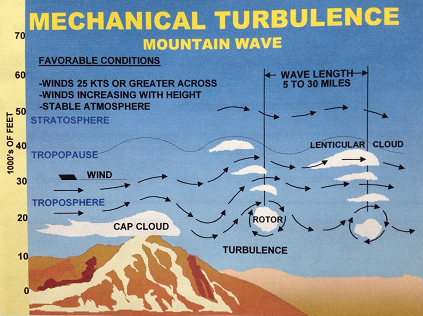Paragliding
Paragliding is the recreational and competitive adventure sport of flying paragliders: lightweight, free-flying, foot-launched glider aircraft with no rigid primary structure.[1] The pilot sits in a harness or lies supine in a cocoon-like ‘speed bag’ suspended below a fabric wing. Wing shape is maintained by the suspension lines, the pressure of air entering vents in the front of the wing, and the aerodynamic forces of the air flowing over the outside. Despite not using an engine, paraglider flights can last many hours and cover many hundreds of kilometres, though…
Meteorology & Micrometeorology
The study of local and small-scale atmospheric phenomena, usually confined to the physical and dynamic occurrences within a shallow stratum of air adjacent to the ground. Very important for light aircraft flying Weather The study and understanding of the weather is essential in all forms of aviation. Gliding involves exploiting the rising currents of air to prolong flight. In powered aircraft “weather” is often something to be avoided, but for glider pilots, it is the power under our wings. Reading…
About Hang Gliding
Soaring flight and cross-country flying Good gliding weather. Well formed cumulus clouds with darker bases suggest active thermals and light winds. A glider in flight is continuously descending, so to achieve an extended flight, the pilot must seek air currents rising faster than the sink rate of the glider. Selecting the sources of rising air currents is the skill that has to be mastered if the pilot wants to achieve flying long distances, known as cross-country (XC). Rising air masses derive from the following…
Hello world!
Welcome to WordPress. This is your first post. Edit or delete it, then start writing!


